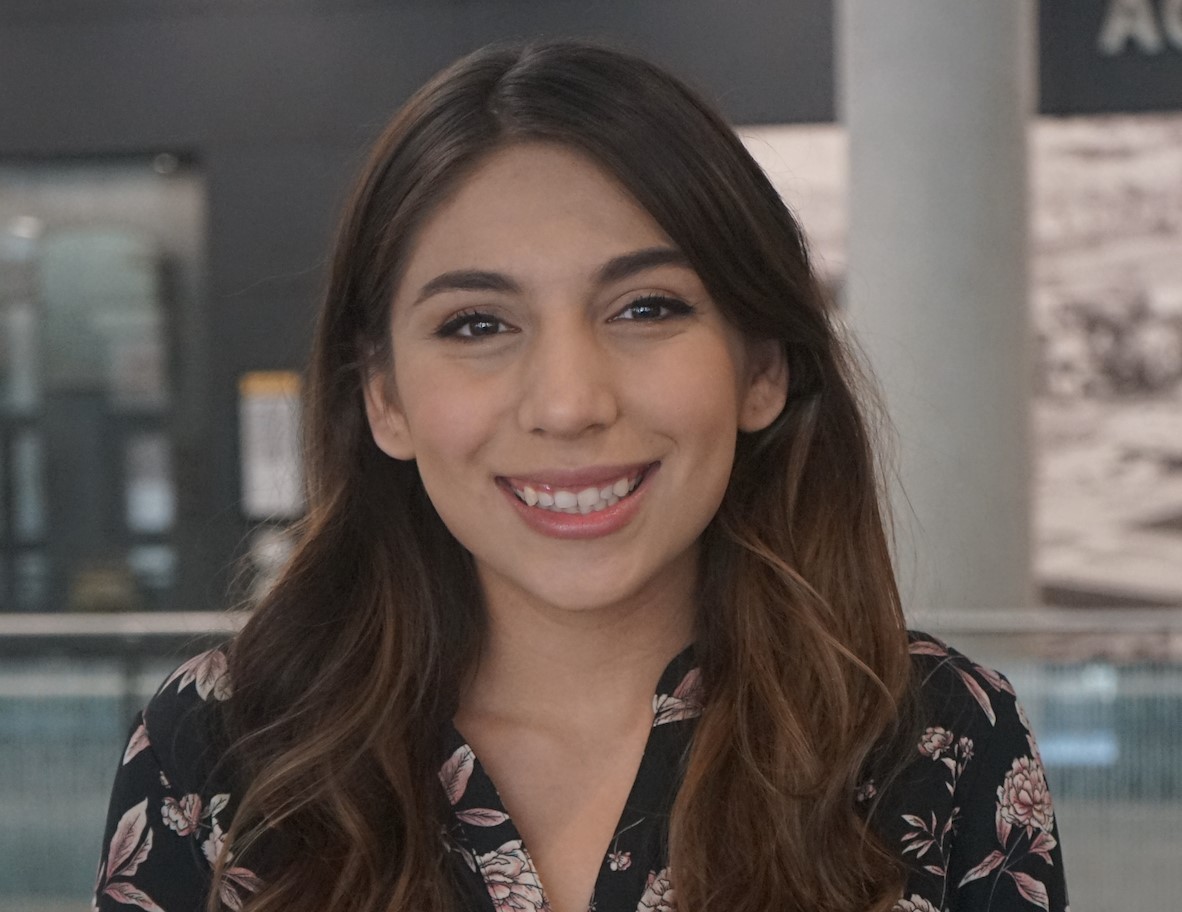SDSU program spotlights value of bilingual skills

The Spanish expression papelito habla loosely translates to “a small piece of paper speaks.” But the phrase is meant to convey a more forceful message.
“Without documentation of what you claim, it doesn’t count.”
For bilingual SDSU students, that documentation comes from the University Seal of Biliteracy & Cultural Competence (USBCC) – a program that combines cultural immersion with an exam that measures reading, writing, speaking, and listening skills in a second language.
SDSU’s Latinx Resource Center organized an information session on the program last month. Launched in the spring of 2021, the seal – akin to a professional certificate – includes a digital badge that validates bilingual fluency and that can be published on a Linkedin profile, and a graduation medal that celebrates the student's achievement.
Angeline Chan, a nursing sophomore, came to hear more about the seal. Born in the U.S. but raised in Costa Rica, she attended English immersion high school and is fluent in Spanish and English. She arrived at SDSU in August.
Chan hopes having the seal gives her a leg up in landing a job in health care.
“I heard Spanish is very valued in California,” she said. “They feel like it is a very important skill to have, and getting the seal will help employers see that skill.”
Dr. Cristina Alfaro, SDSU’s associate vice president of International Affairs, was part of a grassroots group that developed the California State Seal of Biliteracy for K-12 students. When she came to San Diego State, she wanted to bring an advanced version to the university.
“We all know language learning does not stop at the 12th grade, so how do we continue to help students not only to solidify that second language but also to gain other languages if they wish to,” said Alfaro.
SDSU became the first higher education institution in California to offer the USBCC , and to publish a handbook to help other universities launch one as well. About 100 SDSU students have earned the seal so far. The program aligns with the university’s broader Global Strategic Plan to lead as an internationally connected institution.
Luigi Palumbo, head of the Latinx Student Center, received a bilingual certificate after taking four years of Mandarin in high school. Now a senior at SDSU majoring in Chicano Studies with a minor in Public Health, Palumbo wants to get the seal for Spanish, a language he has been speaking all his life.
He doesn’t view the seal as solely about speaking a language besides English. “It just shows that you can acknowledge other people, the diversity in the workplace or any setting,” he said.
A federally designated Hispanic Serving Institution, SDSU focused the USBCC on Spanish speakers initially. But this fall, the university began offering the exam in several additional languages, ranging from Arabic to Chinese, French to Ukrainian.
Of the 35 students preparing for the USBCC test this semester, one will take it in Japanese and one in Vietnamese, said Lysandra Perez, USBCC program coordinator at SDSU. Enrollment costs $100, with scholarships available for students who qualify.
The program is gaining traction as awareness grows, according to Perez. Nearly 180 students registered for an information session held Nov. 14, with about half showing up in person to learn more.
Perez earned the seal as a PhD student in SDSU’s College of Education. A native of Yakima, Wash.,her parents purposely spoke only Spanish at home until she entered kindergarten to ensure she learned Spanish and English.
“All my life, I was never tested to demonstrate, Oh, this is how bilingual you are,” said Perez. “I saw a quote that said learning a language is not only about being proficient in that other language, but you’re learning a whole other culture, too.”

